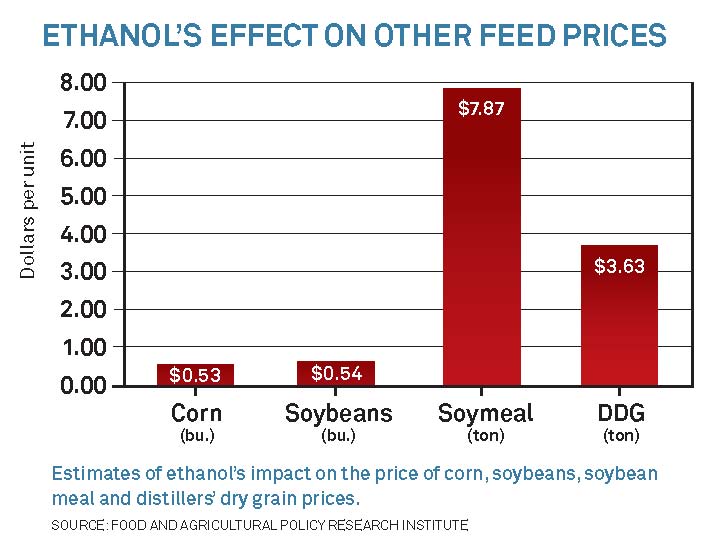Ethanol's Long Shadow

Impact on dairy not what you'd think
With the Volumetric Ethanol Excise Tax Credit of 45¢ per gallon set to expire at the end of December, you might expect a more than $1 per bushel drop in corn prices. After all, each bushel of corn produces 3 gal. of ethanol, right?
Bonus Content |
| FAPRI analysis of ethanol's impact |
Think again. If recent analysis is to be believed, you’ll hardly notice any change at all.
For one thing, the tax credit is just one appendage of a three-headed ethanol monster that includes tariff protection and usage mandates. Plus, 200 ethanol plants across the country consume 5 billion bushels of corn per year.
"Ethanol infrastructure will not go away if we eliminate ethanol policy," says Scott Brown of the Food and Agricultural Policy Research Institute (FAPRI). "How competitive for grain ethanol is depends on oil prices."
Ethanol’s impact on corn prices is estimated at 50¢ to 80¢ per bushel by the Congressional Budget Office; 59¢ per bushel by Iowa State University; and 53¢ per bushel by FAPRI—with only 2¢ of that coming from the tax credit and 11¢ from tariffs. FAPRI says ethanol policy adds just 54¢ per bushel to the price of soybeans; $7.87 per ton to soybean meal; and $3.63 per ton to distillers’ dry grains. "As a result, you won’t see a huge change in corn and feed prices when the tax credit goes away," Brown says.
World feed demand has not abated, despite historically high prices. Even with $6 per bushel corn, the U.S. exports 2 billion bushels, or 16% to 17% of the crop. One out of 4 bu. of soybeans is exported.


Eliminating tariffs won’t help. Brazilian ethanol prices, driven by world sugar prices, are higher than U.S. prices. In 2010/2011, the U.S. was thus able to net export some 2.5 billion liters of ethanol. Mandated usage is still on the upswing. In 2011, ethanol production was nearly 13 billion gallons. It is expected to top out at 15 billion gallons by 2015.
Bottom line, Brown says: "If you want lower corn prices, you want lower crude oil prices. If we have $100-plus per barrel oil, demand for ethanol will only continue to grow."
The impact on dairy from ethanol is significant, but not devastating. Brown estimates that a 50¢ per bushel corn impact translates to 35¢ per cwt. higher cost of production. Higher feed costs depress total milk production by 0.4%, raising milk prices by 25¢ per cwt. And the lower milk
supply requires about 35,000 fewer cows. When it’s all totaled, net dairy returns will likely be down 10¢ to 15¢ per cwt. over the long term.







